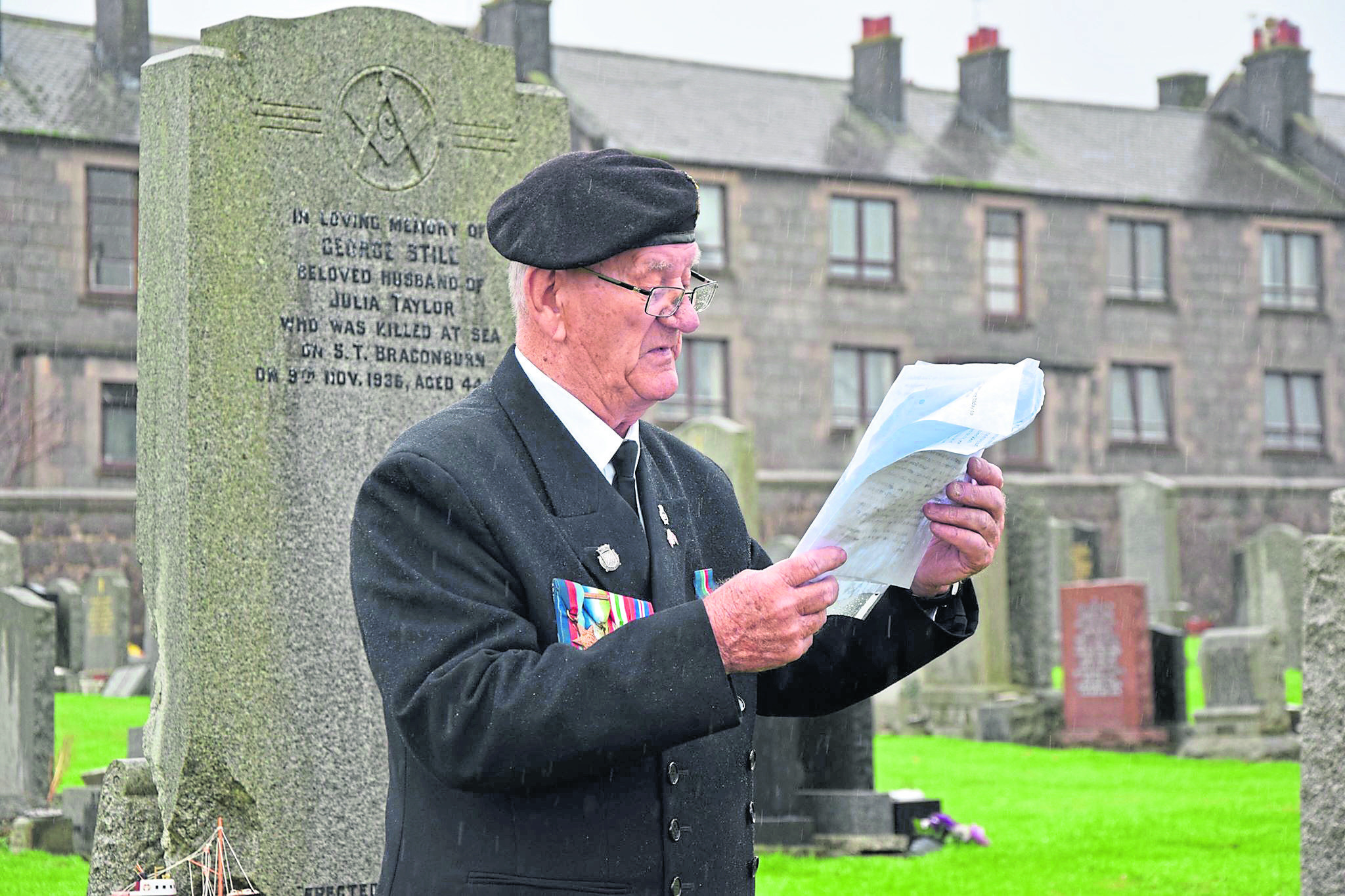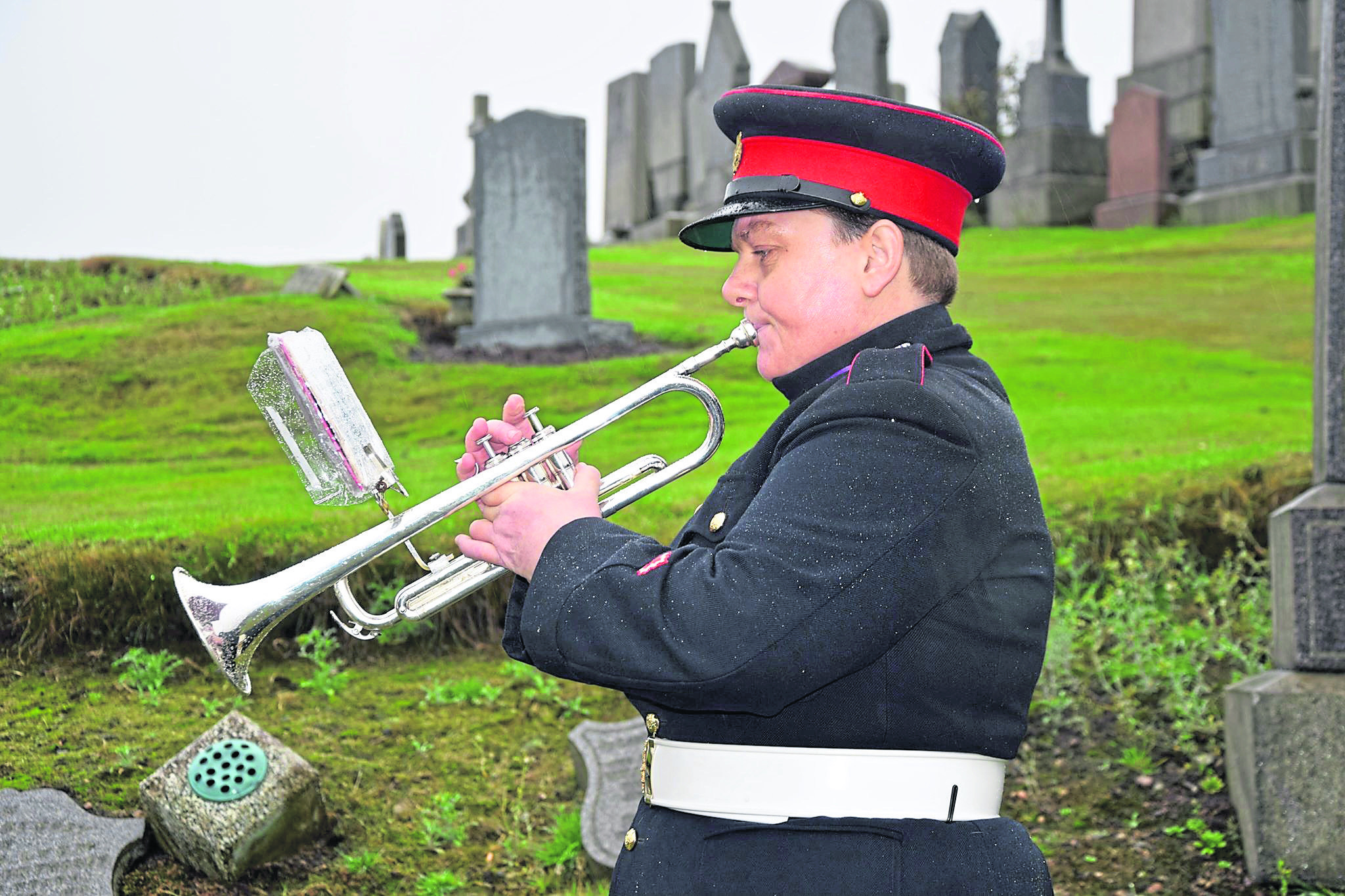An Aberdeen man who died at sea more than 80 years ago has received a poignant tribute from the grandson he never knew.
George Still died in an accident aboard the St Bragonburn steam trawler in 1936 when he was 44, and is buried in the city’s Trinity Cemetery.
His grandson, Jim Still, was born the following year but it was only yesterday that he was finally able to visit his relative’s grave to honour him.
Mr Still jun was born in Woodside and spent his childhood in Aberdeen before living in Australia for decades, and he now resides in East Sussex.
But he has retained a keen interest in his north-east roots, and yesterday’s visit marked the culmination of a quest for information on his family.
The recent research also led to the discovery of a cousin, Isabella, who died aged 13 months in 1917.
Mr Still sen and his wife, Julia, had never revealed the heartbreaking loss to their other children, including Mr Still jun’s father.
On Saturday, Mr Still jun arrived in Aberdeen and was reunited with his cousin, Valerie Masson, who he had not seen for 55 years.
And yesterday, the octogenarian was joined by friends and well-wishers as he made an emotional visit to his grandfather’s graveside.
He said he was able to track down the spot with help from Aberdeen City Council’s records department and the local “graveyard guardians” volunteer group.
Mr Still jun said: “I didn’t know where to look for information at first, and had almost given up when I was pointed in the right direction.”
Saltire flags were planted around the grave, before sand and seawater from Aberdeen beach were added to the soil to represent the sailor’s affinity with the sea.
Family friend Heidi Watkins is known for known for playing the Last Post for the Canadian Commissioners, and has performed at prestigious events and military funerals.
After Mr Still jun placed a wreath at his grandfather’s grave and saluted, she played the naval hymn For Those In Peril On The Sea on the trumpet.
Mr Still jun was wearing the medals his own father had won during World War II, and one he earned in the Merchant Navy, for the occasion.
The pensioner then walked through the graveyard to find the headstone of Isabella, which was marked only with the modest inscription “Still”.
He placed a teddy bear beside it, which had its eyes covered and carried the message: “When I do this I can pretend you are not very far away”.
He also laid a colourful stone with the name Isabella, and a rock painted with flowers.
Mr Still jun said: “We felt it a shame that the grave was only marked with ‘Still’, and it feels like today she is no longer lost. She is no longer known just by her surname.
“It is a tragic story that Isabella’s grave must not have been visited in more than 100 years, it is really sad to think about.”
Ms Watkins, who played Will Ye No Come Back Again at Isabella’s grave, added: “Jim’s family history is really fascinating, and the luck involved in him tracking down his relations is something else.”
Mrs Masson described the “emotional” reunion with her cousin as the crowd dispersed yesterday morning.
She said: “This was the first time I have seen him for 55 years, and it means a lot now that the last generation is gone and we are now the oldest of the family.”
The death of George Still
George Still died on November 3, 1936, while he was serving as chief engineer aboard the St Bragonburn steam trawler.
He was killed in “horrific circumstances”, which were never discussed by his family.
But his grandson recently learned that the seaman lost his footing in the engine room of the boat because of the swell of the tide, and died instantly when he struck his head on machinery.
Staff from Fraserburgh Lifeboat Station were able to confirm that the incident took place 50 miles out to sea, and that the boat returned to the port there shortly afterwards.
Doctors examined Mr Still there, and ordered that the trawler be taken home to Aberdeen.
Mr Still was held in such esteem by his crew that they alone carried his body from the boat, refusing to allow any of the police officers or doctors there to help.
His headstone was paid for by his wife, Julia, and he was buried in Trinity Cemetery on November 13, 1936.
The Bragonburn, which was launched at Aberdeen in 1918, was sunk in 1944 after being commandeered by Winston Churchill for the war effort.
He requested that old trawlers be used to block ships off Scapa Flow at Orkney, but the Bragonburn collided with an American steam trawler on the way there and sunk with the loss of every man on board.

